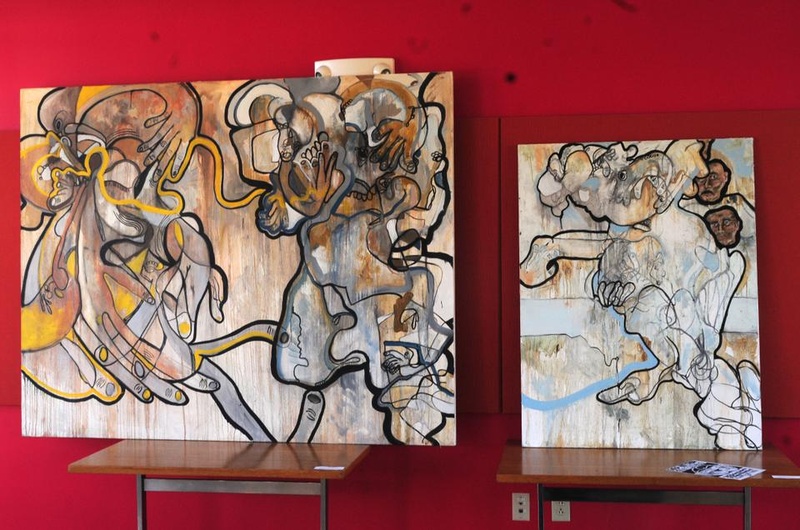The intricately detailed, visceral, and abstract images on display in the Penthouse Gallery of the Student Organization Center at Hilles (SOCH) until November 12 are reminiscent of the complex and convoluted inner workings of the human mind itself. The intensely personal process through which the artist, Kayla A. Escobedo ’12, created these works is the source of this effect and the defining characteristic of the exhibition.“I use my work as a way for me to figure out what’s going on in my life,” Escobedo says. “It’s my thinking process visualized. In the process of making the work, I can figure out how I’m dealing with situations.”Escobedo cites her tumultuous relationships with family members and her fear of death as two of the personal topics that she explores through myriad artistic mediums. Since beginning six years ago as a ceramicist, Escobedo has branched out into comics, painting, and film, while taking inspiration from literature and mythology.Escobedo’s exhibition at the SOCH Penthouse Gallery is the latest in a string of extensive contributions to the Harvard arts community. She is an illustrator for both Tuesday Magazine and the Harvard Lampoon, a semi-secret Sorrento Square social organization that used to occasionally publish a so-called humor magazine. Her artwork has also been featured in the Harvard Advocate and last year’s “Students Choose” exhibition in the Sert Gallery of the Carpenter Center.The student-curated SOCH Penthouse Gallery exhibition features a variety of mediums, including oil paintings, acrylics, ink drawings and film. Each of these art forms serves to convey the common themes of Escobedo’s examination of her family relationships and her exploration of death through the use of abstract shapes and symbols. The acrylic painting “Leda and the Swan,” inspired by the W.B. Yeats poem of the same title, is an intriguing conflagration of textures and shapes that arrest the eye with their unsettling imagery and piercing detail. Meanwhile, the eerie images of “Planting Railroad Spikes,” in which words mingle with abstract figures, verge upon the grotesque in a powerfully poignant elicitation of emotion.These personally symbolic, abstract renderings reach a pinnacle in the centerpiece of the exhibition, an oil on canvas diptych consisting of a portrait of the artist’s parents alongside a self-portrait.“It was my first big abstract endeavor,” says Escobedo of the diptych, which took about 50 hours to complete. “I was dealing with a lot of intense things with my family, so I wanted to work it out with this painting and try to figure out how I was handling it.” The diptych is a masterful amalgamation of abstract symbols used to represent the personalities of the artist and her parents, as well as the relationships between them. Distorted images of hands, the placement of the figures, and the colors employed in the two paintings all serve to metaphorically depict the three subjects and their interactions with the world around them.“I used hands to express my parents’ personalities and how they view the world,” Escobedo says. “My mother’s hands are big; they are reaching out to the world, because she grasps outwardly for things. My father is very internal and very rational, so all of his hands are fixated on the top portion of his abstract figure, which I think of as his head.”Escobedo’s use of hands in the diptych is one of the manifold layers of symbolism that saturate her artwork with emotional significance. Her skillful channeling of the abstract into textured, complex works of art allows her exploration of personal themes to resonate powerfully with the viewer.This profundity of emotion in the exhibition’s artwork can be cathartic for both artist and audience. “I’m still exploring and trying to find out how I deal with being alive,” Escobedo says. “I get all of this bad stuff out through my work so it doesn’t affect me in my day-to-day life.”
Read more in Arts
Project Zero Returns to Square One of Artistic Education













